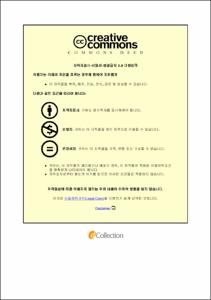An Economic Evaluation of Artisanal Fish Processing with wood Fuel in Ghana
- Abstract
- Fish is an important source of food and income to many people in the developing world. In Africa, more than 5% of the population (about 35 million people) depend wholly or partly on the fisheries sector, mostly artisanal fisheries for their livelihood. Artisanal fishermen in Ghana land approximately 1235 tons of fish annually. Statistical data obtained from Ghana fisheries commission show that 3041 tons were caught in 2009 representing 6% of the total fish harvested that year (Ghana Fisheries Commission, 2012). Most of them are usually sold as a raw product. Fish is a highly perishable product whose spoillage begins immediately it is caught. Fishermen are therefore required to urgently process or preserve the fish caught so as to reduce post harvest losses caused by loss of quality when fish decomposes. Since time immemorial, Ghanians have employed various traditional methods to preserve and process fish for later consumption. The commonly used methods include; smoking, sun drying, salting, deep frying and fermenting besides various combinations of these. In Ghana, smoking is the most widely used method in fish preservation. Almost many species of fish available in the country can be smoked and it is estimated that 70-80% of the domestic marine and freshwater catch is consumed in smoked form. These preservation method is advantageous since it prolongs shelf life of the fish products, enhances flavor and increases utilization in soups and sauces. Besides, it reduces wastage in times of bumper catches and permits storage for the lean season. This ensures a constant fish supply round the year and makes fish easier to pack, transport and market. In most fishing communities, fish smoking is regarded as the main economic activity and source of livelihood to women. In Ghana, the situation is the same since the activity is carried out by women in coastal towns and villages. Processing sheds are located along coastline and on the shores of Lake Volta. There are various methods of fish smoking. The smoking process can take the form of "wet" hot smoking or "dry" hot smoking. The method chosen will depend on the type of fish to be smoked, its uses and desired storage period. Both processes are carried out at temperatures above 80°C, which are high enough to cook the fish. This study explored the various wood fuels that are used for fish smoking. This fuel woods were grouped into “bad” and “Preferred” fuel woods depending on the consumers preference on the smoked fish products they produced. Mangrove was found to be excellent in producing the consumer preferred colours of golden brown or dark brown, while Wawa produced the non- preferred colours of light brown. Profitability analysis was also computed by calculating profit and profit margins, market margins and efficiency. these parameters were then used to assess the market performance of the small scale smoked fish.
- Issued Date
- 2016
- Awarded Date
- 2016. 8
- Type
- Dissertation
- Keyword
- Artisanal Fish Ghana wood fuel
- Publisher
- 부경대학교 대학원
- Affiliation
- 부경대학교 대학원
- Department
- 대학원 해양수산경영학과
- Advisor
- 장영수
- Table Of Contents
- I . Introduction 1
II . Fisheries in Ghana 6
1.General background 6
2. Contribution of fisheries in Ghana's Economy 12
3. Overview of smoked fish processing in Ghana 14
4. Social- cultural dimension of fish processing in Ghana 15
5. Stages of smeked fish processing in Ghana 16
6. Marketing of smoked fish in Ghana 17
III . Analytical Method & Data 22
1. Data obtained 22
2. Method used 22
3. The identification of fuel wood used in Ghana 24
4. The efficiency of fuel wood performance 29
5. Combustion of fuel wood on smoked fish 32
6. Profitability and maketing analysis of smoked fish processingg in Ghana 34
7. Operating costs 35
IV . Analytical Results 38
1. Profit 38
2. Profit margins for smoked fish in Ghana 41
3. Profit margin of smoked fish 41
4. Market operational efficiency of smoked fish 42
5. Return on investment of smoked fish 43
6. Cost analysis of smoked fish processing 43
7. Measuring the efficiency of wood performance of the quality of smoked fish 44
8. Combustion of fuel wood 44
V . Conclusion 47
References 51
- Degree
- Master
- Files in This Item:
-
-
Download
 An Economic Evaluation of Artisanal Fish Processing with wood Fuel in Ghana.pdf
기타 데이터 / 835.95 kB / Adobe PDF
An Economic Evaluation of Artisanal Fish Processing with wood Fuel in Ghana.pdf
기타 데이터 / 835.95 kB / Adobe PDF
-
Items in Repository are protected by copyright, with all rights reserved, unless otherwise indicated.